Prof. Jay Neitz, Ph.D.
Biographie

Abstract: How the World Became Coloured—The Evolution of Hue Perception In Primates
David Kremer
Biographie
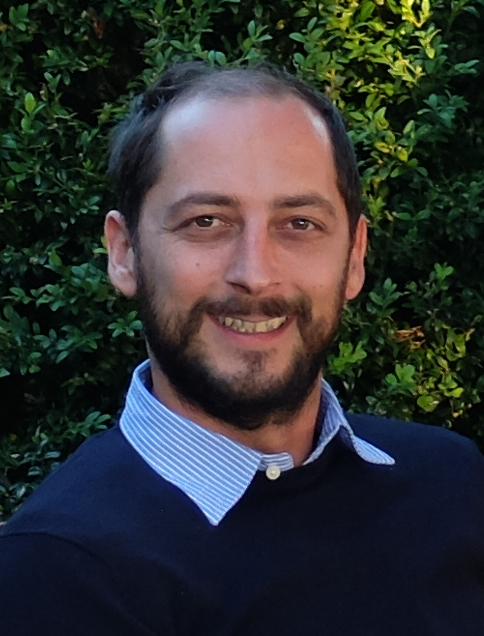
Das familiengeführte, mittelständische Unternehmen hat sich auf die Herstellung und den Vertrieb seltener und historischer Pigmente spezialisiert. Die in der Farbmühle in Aichstetten im Allgäu beheimatete Firma ist Weltmarktführer im Bereich der Pigmente für die Denkmalpflege, Restaurierung und die anspruchsvolle Malerei. Durch die Entwicklung von Spezialprodukten bedient Kremer Pigmente weitere Nischenmärkte in diesem Bereich.
Abstract: Didaktik der Pigmente – eine Einführung
Besondere Eigenschaften der Oberfläche, der chemischen Stabilität und der Lichtechtheit werden bei geeigneten Vertretern angesprochen. Unter anderem wird Dr. Georg Kremer über Ocker, Purpur, Indigo, Krappwurzeln und Smalte sprechen.
Michael Bach
Biographie
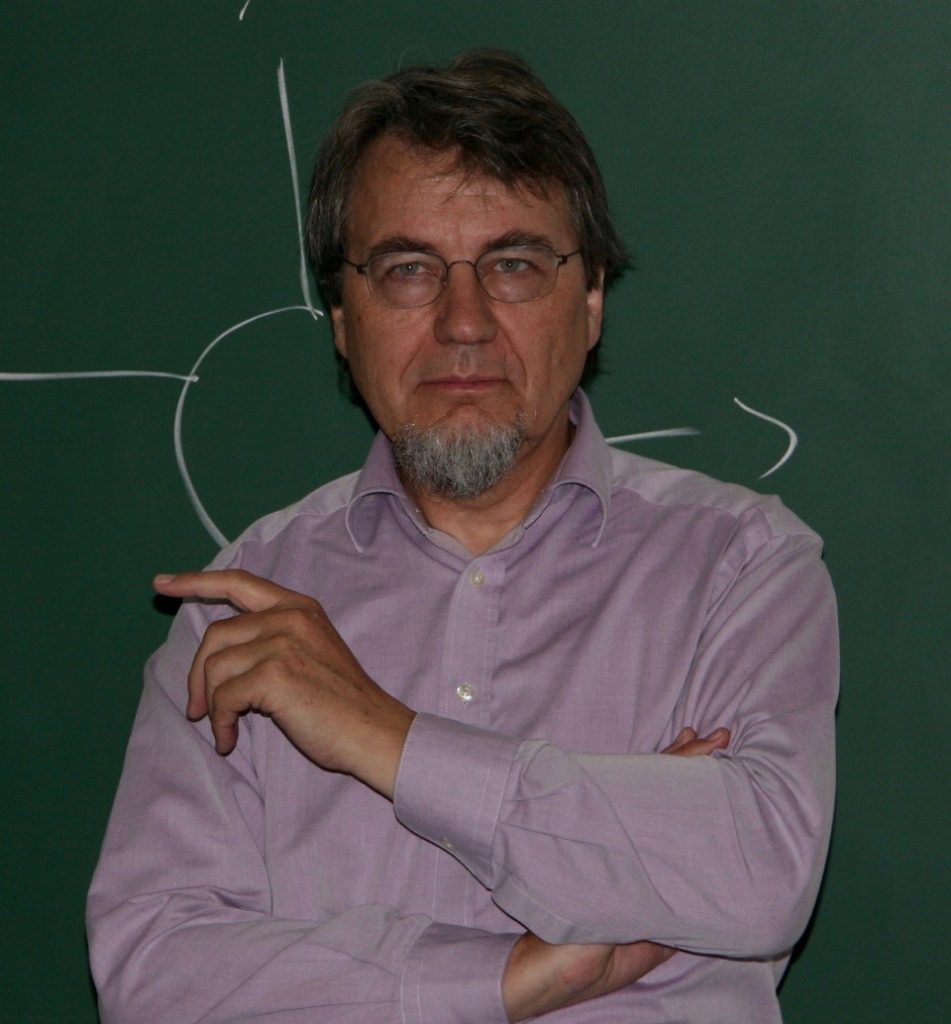
Abstract: Is all colour illusory?
Sind alle Farben nur Täuschung?
“All perception is illusion” has some grain of truth, but is not very conducive to understanding. However, in the case of colour, “out there” are only spectra of incident light, absorbance and reflectance. Very little of this rich information remains after passing through our three cone types. Yet our perceptual apparatus creates out of this stable categories, which we call colours, which can be consistently communicated and reflect stable object properties even under widely varying illumination (colour constancy). The wide variability of colour naming across cultures indicates that there is more to colour than just physiology. And indeed the poetry of colour can deeply touch our innermost. My talk will will not be at the cutting edge of science but rather introduce a little to our understanding of colour vision, demonstrate that we are all –somewhat– colour blind, and pursue many beautiful factors that affect our perception of colour.
“Alles war wir wahrnehmen ist eine Täuschung” – da ist was dran, aber es hilft nicht viel wenn wir unsere Wahrnehmung besser verstehen wollen. Bei Farbe ist aber die “innere Konstruktion” besonders deutlich: “Da draußen” sind nur Spektren von Beleuchtung, Absorption und Reflektion; davon bleibt nur wenig Information übrig, wenn das Licht unsere 3 Zapfentypen aktiviert hat. Und doch schafft es unser Wahrnehmungsapparat, daraus Kategorien, eben die Farben, zu konstruieren und zu kommunizieren, die Objekteigenschaften stabil repräsentieren auch unter stark variierender Beleuchtungsspektren (Farbkonstanz). Die große Varianz der Farbkategorien über Weltkulturen hinweg verdeutlicht, dass zu Farbe mehr gehört als reine Physiologie; auch kann uns die Poesie der Farben besonders tief berühren. Mein Vortrag wird nicht neueste wissenschaftliche Erkenntnisse vermitteln, sondern etwas in das Verständnis des Farbensehens einführen, demonstrieren, dass wir alle in gewissem Maße farbenblind sind, und mannigfache und schöne Einflussfaktoren auf unsere Farbwahrnehmung vorführen.
Bevil Conway
Biographie

He is a visual neuroscientist and artist who studies the neural basis of color using physiological, behavioral, and modeling techniques. His laboratory uses a range of techniques, including fMRI-guided microelectrode recording and microstimulation in awake-behaving non-human primates trained to perform visual tasks, along with psychophysics and fMRI in humans, and computational modeling, to define and test hypotheses relating physiology and perception. In addition to maintaining an active studio practice, Prof. Conway is involved in ongoing projects at the interface of visual neuroscience, visual art, and the practice of making art. He teaches core courses in the Neuroscience program and an advanced interdisciplinary laboratory course, Vision and Art: Physics, Physiology, Perception, and Practice.
His artwork has been published in several books including Vision and Art (Abrams, 2002) and Brain and Visual Perception (Oxford University Press, 2004), and has been used by BOSE Wave Radio in advertising. A major solo show of his work, 'FACTS', took place at the Radcliffe Institute for Advanced Study in 2010/2011. The work is held in several private collections in Europe, Africa and North America and is in the public collection of the Fogg Museum and the Boston Public Library, and on semi-permanent exhibit at the N.I.H. He is currently working on a series of drawings and etchings, a 'Rake's Progress', exploring mark-making and movement, inspired by Mark Morris's Dancers.
Abstract: How Colour Language Reflects Usefulness of Colour
Dr. Maria Olkkonen
Biographie
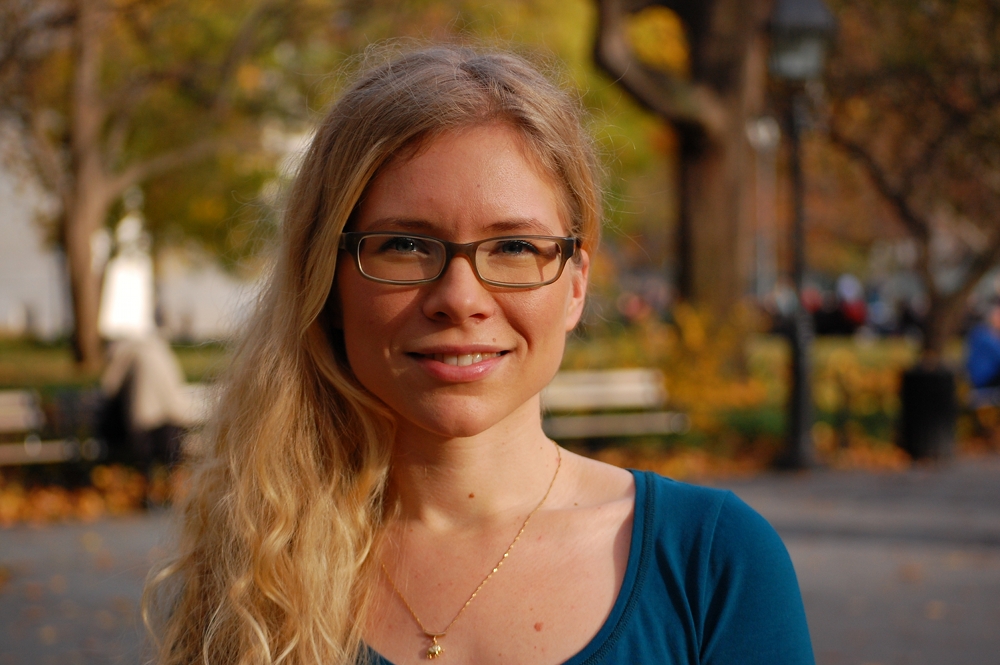
She received an M.A. in psychology from the University of Helsinki in 2004, writing her master's thesis on the interaction between brightness and color information in the simultaneous contrast illusion. Working with Dr. Pentti Laurinen on her master's thesis instilled in her an excitement about using psychophysics as a rirogous tool to study psychological processes and neural computation. After working in corporate research for a while at the Nokia Research Center, she decided to go back to academia and was offered a PhD studentship with Prof. Karl Gegenfurtner at the University of Giessen where she received her PhD in 2009. To learn more about color and material constancy, she then moved to Philadelphia to work with Prof. David Brainard at UPenn. While in Philadelphia, she also worked with Prof. Sarah Allred at Rutgers on the relationship between color memory and perception, and finally did a two-year project in Prof. Russell Epstein's lab learning about fMRI adaptation and MVPA methods. She has been in Durham since September 2015.
Abstract: Colour Memory
Department of Psychology, Durham University Institute of Behavioural Sciences, University of Helsinki Humans perceive the colors of objects in a relatively stable manner regardless of widely varying viewing conditions – an ability called color constancy. According to a common suggestion emanating from a Bayesian theory of vision, the visual system uses constraints from prior knowledge to infer object properties from noisy sensory inputs.
However, very little is known about how this knowledge is learned from the visual input, and how it is used in visual estimation tasks. I will talk about how object knowledge is learned from visual input for color, how it is used by human observers in noisy color estimation tasks, and how it interacts with well-known color context effects. I will present a quantitative framework in which learning, memory, and perception can be considered jointly, reflecting the structure of natural tasks. I will argue that to understand color perception in the real world, all of these processes need to be considered together.
Prof. Anya Hurlbert, Ph.D.
Biographie

Her background is in physics, medicine and neuroscience, with her higher education and early career research experience taking place on both sides of the Atlantic. She graduated from Princeton University in 1980 with a BA in Physics, followed in 1981 by a Part III Diploma in Theoretical Physics and in 1982 an MA in Physiology from Cambridge University, where she held a Marshall Scholarship. In 1989, she received a PhD in Brain and Cognitive Sciences from MIT, where she studied with Tomaso Poggio and Peter Schiller, and in 1990, an MD from Harvard Medical School. She then held a Vision Research Fellowship at Oxford University in Andrew Parker’s lab, before joining Physiological Sciences in the Faculty of Medical Sciences at Newcastle University in 1991 as a lecturer.
Having moved from Physiological Sciences to Psychology, she became acting Head of the Division of Psychology, Brain and Behaviour (Faculty of Science, Agriculture and Engineering) in 2003, and interim Head in 2007, helping to create the new School of Psychology in the Faculty of Medical Sciences. In 2004, she co-founded the Institute of Neuroscience with the late Professor Colin Ingram, and was co-Director of the Institute until 2014. In 2012, they established the Centre for Translational Systems Neuroscience with a Capital Award from the Wellcome Trust.
Abstract: The Colour of Paintings in a Contemporary Light
Here I will discuss the role that colour constancy plays in people’s perception of paintings, both in terms of the artist’s intent in capturing the constant colour of objects (as in Moroni’s Portrait of a Lady) or the effects of changing illumination spectrum (as in Monet’s series paintings), and in terms of the illumination spectrum under which people view the paintings. For the latter, I will review experiments in which people view artworks illuminated by dynamically changing light from a bank of tuneable LED light sources, demonstrating, as in #thedress, that the colours people see in paintings vary widely. These experiments also highlight the fact that the colours we see, and the constancy with which we see them, must evolve along with the technology that enables new and ever-changing illuminations.
Prof. Karl Gegenfurtner
Biographie

Karl Gegenfurtner is the head of the DFG Collaborative Research Center TRR 135 on the “Cardinal mechanisms of perception”. He was elected into the National Academy of Science Leopoldina in 2015.
Abstract: Mechanism of colour perception: From cones to cognition via constancy
Thomas Euler
Biographie

Thomas Euler’s research focus is the functional organization of retinal microcircuits, aimed at a better understanding of the underlying computational principles. Furthermore, he is interested in how microcircuits change during retinal degeneration.
Abstract: Seeing with the Eyes of Mice
Seeing with the Eyes of Mice. Mice are not the first animals that come to mind when thinking of colour vision. Mice are certainly no colour specialists but like most mammals, mice feature two spectral types of cone opsins, a medium (M, "green") and a short (S, "UV/blue") wavelength sensitive opsin. Mice are, thus, dichromates - as confirmed by behavioural experiments. In addition, the mouse retina displays an odd specialization that one would expect to hamper colour vision at least in the ventral retina: a dorso-ventral gradient of cone opsin co-expression that renders ventral M-cones UV/blue-sensitive. In my talk, I will review the chromatic circuits in the mouse retina and discuss what functional role the opsin gradient might have in mouse vision.
Axel Venn
Biographie
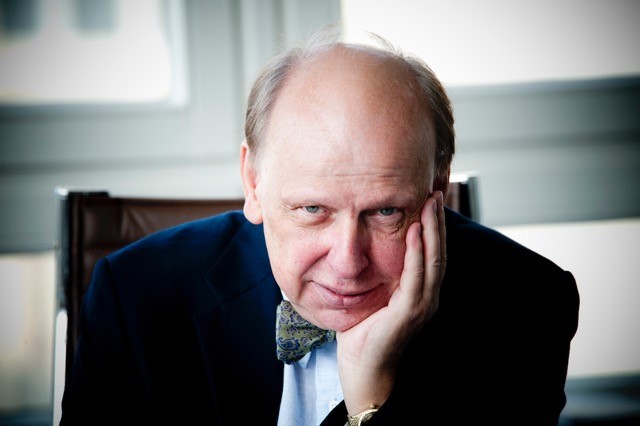
Abstract: Marketing mit Ewigkeits-Appeal. Giga-Trends als Option für langfristige Gestaltungsoptionen.
Es geht um Design- und Architektur-Konzepte, deren Profile zum kollektiven, internationalen Kommunikationswerkzeug der kommenden Jahrzehnte gehören werden. Die kommerziell formulierten Leitappelle nutzen eine Art Farbe-Form-Esperanto als Verständigungsmittel.
Neueste Beispiele aus unterschiedlichsten, internationalen Anspruchsebenen und Funktionsbereichen sollen die folgenden Thesen illustrieren.
Die Gigatrends der Gegenwart und der näheren und weiteren Zukunft bedienen immer häufiger archaisch anmutende dessinatorische Grundmuster. Sie nutzen u.a. altbekannte Vorbilder der vorklassischen morgenländischen Stadtkulturen von mäandrierenden Lineaturen, Flechtwerken und Überkreuzungen bis hin zu verschlungenen Gewirke-Konstrukten. Das geschieht in gleicher Weise in der Produkt-Architektur in Form differenzierter Flächengebilde: Das ehemals klein bis mikroskopisch Abgebildete dehnt sich zu makroskopisch aufgeblasenen, plastischen Strukturen aus.
Gleichzeitig erleben wir eine veritable Renaissance metallisch geprägter
Farb-, Glanz- und Griff-Anmutungen. Silber-, Gold- und Platin-Oberflächen, sowie zuhauf genutzte Skulptur-Fragmente in Bronze und Messing gehören genauso zum kommenden Zeitgeist wie die nimmersatte Sehnsucht nach konventionellen, jahrhundertelang zitierten Farb- und Form-Metaphern. Die Innovationscharakteristik manifestiert sich nicht mehr durch den schnellstmöglichen Überraschungscoup, sondern in der Verstetigung tradierter Wertanmutungen oder: „Das Alte ist das Neue“. Und:
„Zukunftsträume wechseln die Richtung“.
Daniel Samanns
Biographie
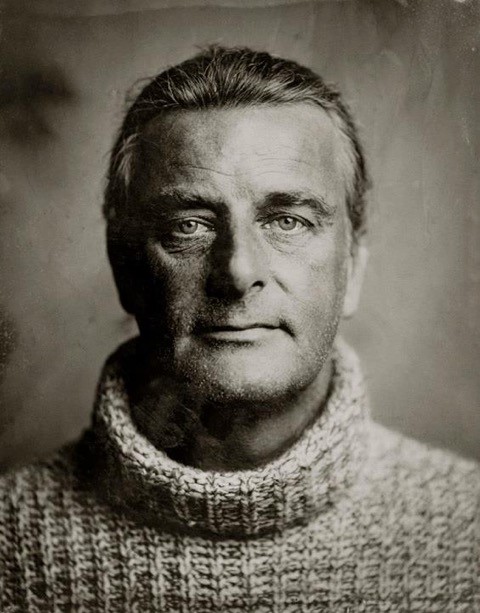
Um das kulturelle photographische Erbe am Leben zu erhalten, ist Daniel Samanns seit 2013 als freier Dozent taetig.
Das Interesse an Samanns´ kuenstlerischer Arbeit waechst ebenso . Ausstellungs-Anfragen, Portrait- und Spezial-Auftraege mit dieser Technik mehren sich seither.
Abstract: Autochrome. The Vital Process
Die Gebrüder Lumière brachten Autochrome 1907 auf den Markt, das erste ernstzunehmende farbfotografische Verfahren verbreitete sich rasch, verschwand aber mit der Kleinbildfotografie Ende der 1930er Jahre. Das komplizierte Autochrom gilt heute als eine verschollene Technik. Vor dem Hintergrund der intendierten Neuentdeckung, resümiert der Vortrag die Ergebnisse der "freien" Forschungsarbeit des Fotografen Daniel Samanns und des Physikers Julien Fière. Die deutsch-französische Kooperation hat sich zum Ziel gesetzt, die autochrome Technik wissenschaftlich zu entschlüsseln und sie für die zeitgenössische analoge Fotografie des 21. Jahrhunderts praktikabel zu machen. Angefangen bei der stillen Betrachtung der piktoralistischen Autochrome, den ersten "Farb-Diapositiven" der Gebrüder Lumière mit ihren unzähligen farbigen Stärkekörnern, bis hin zur archaischen, tonnenschweren punktuellen Pressung der Körner auf kleinsten Flächen der Glasplatten: Der Vortrag vermittelt ein tieferes Verständnis für Zusammenhänge und praktische Unwägbarkeiten – gleichsam als mögliche Lösungswege zur Herstellung von Autochromen und zur Wieder-Entdeckung des Verfahrens an sich.